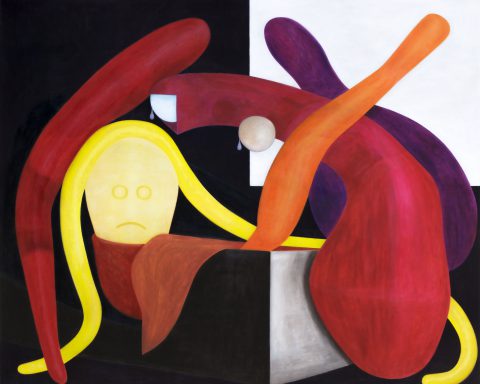To the eye of a casual observer, a himmeli may just look like a trendy piece of decor. Yet, the quintessential Finnish ornament has a century-long history, incorporating many beliefs, myths and traditions of Finnish culture.
A himmeli is one of the most impressive examples of Finnish craft heritage. Leipzig resident Sara Heimolinna will tell you all about it.
The term himmeli is of old Germanic origin, meaning “heaven”.

The exact etymology of the word is unclear, yet “some versions of himmelis used to be made throughout Europe at some point, but the tradition seems to have mainly remained and developed in Finland,” Sara says.

Traditionally made of rye straw, there are many arftful interpretations of himmelis these days.

Some are even made of glass, but to Sara, they are entirely different objects: “Personally, I think himmelis should be both lightweight and delicate. It’s those qualities that bring out their true beauty. So, I prefer coarse rye straw, whenever possible.”
A Finnish cycle of life
For hundreds of years, himmelis have decorated Finnish homes, hoping to bring their owners happiness, wealth and a bountiful harvest in the summer.
“You have reveled my joys and mourned my sorrows, and you have always been there quiet and delicate, when I have needed to contemplate.” – Jalmari Sauli / Himmeli: Tales about the nature and children of nature (1928)
Sara moved to Leipzig a couple of years ago. She describes himmelis as mythical objects that remind her of meditative aspects of life in Finland.
They’re epitomized by centuries of cultural heritage and the painstaking accuracy that goes into making them. And watching them slowly twirl when hanging from the ceiling lets your mind feel pleasantly at ease.
Himmelis have been omnipresent in Finnish life for centuries, indeed. They hang above cribs of newborns, and they’re used as wedding decorations as a harbinger of matrimonial happiness and fertility. They have been ornaments for both the Midsummer Festival and Yuletide as general tokens of wealth and happiness.
In former times, making himmelis was also an important part of the mating ritual for the young.
Meditation and shadow play
Sara is eager to stress the meditative aspects of making a himmeli, and the calmness that comes with watching it twirl under the ceiling. She feels there’s something sacred about them. Maybe she’s got a point as well, seeing that science has discovered the benefits of crafting. Empirical observations suggest that crafting offers a heightened sense of personal achievement, clears and calms your mind.
Our society today, with all its electric gadgets, has us constantly perform multi-tasking jobs, and our attention-span is becoming fleetingly short. Making himmelis may offer a welcome way of crafty relaxation.
“I find that making himmelis is good for my well-being, because it’s certainly meditative. The activity lasts long, is repetitive, and requires lots of focus. You get lost in yourself while making one – it takes me to a calm, spiritual place,” Sara says. “Himmelis have also been tokens of devout contemplation. In old Finnish drawings, you can see people sitting at tables in dim candle light, contemplating himmelis with still faces.”
Sara gave me a himmeli she made, and I’m starting to get what this simple yet beautiful object is about. Watching the himmeli sway in the air ever so gently transpires an almost weightless feeling with organic, rhythmic patterns of twirling shadowplay.
Want to learn to make a himmeli yourself?
Join Sara’s workshops: 18 March at Villa Hasenholz and 24 March at Anderthalb. Register via email: sara@practicaliti.es, and check out Sara’s blog.











